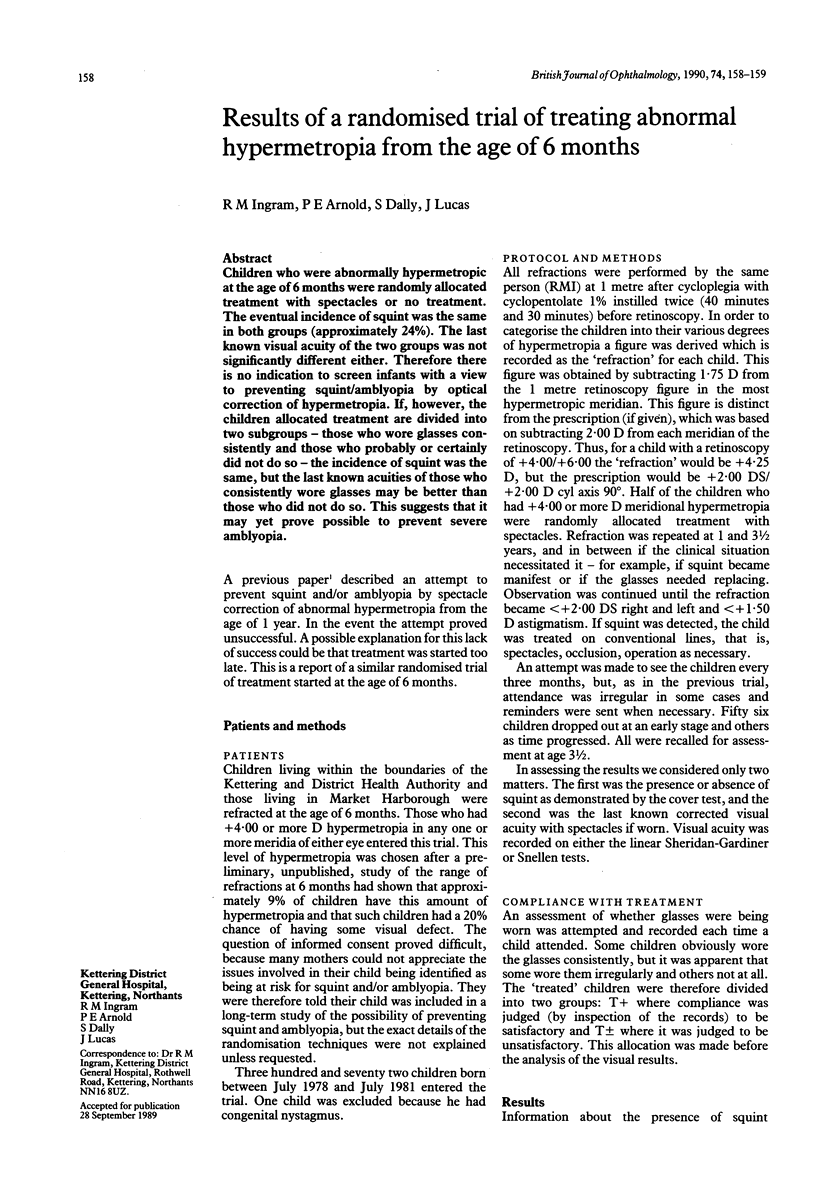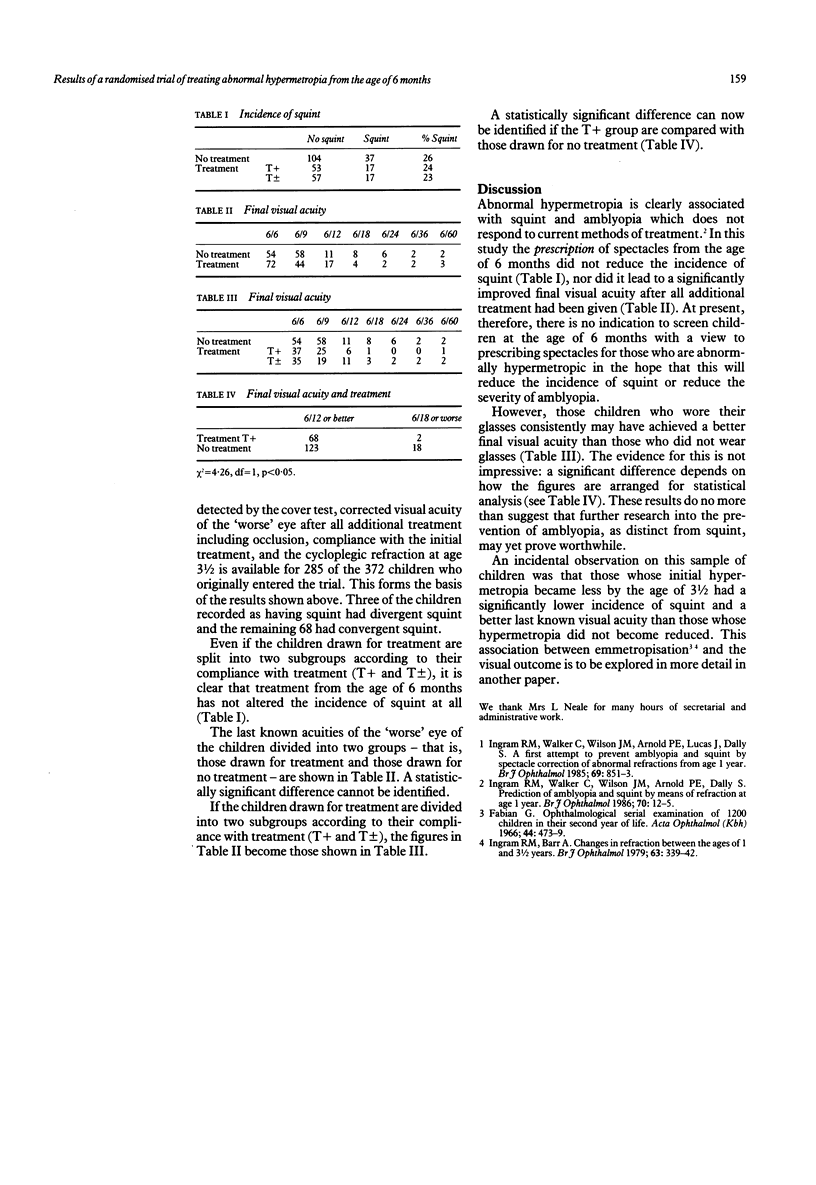Abstract
Children who were abnormally hypermetropic at the age of 6 months were randomly allocated treatment with spectacles or no treatment. The eventual incidence of squint was the same in both groups (approximately 24%). The last known visual acuity of the two groups was not significantly different either. Therefore there is no indication to screen infants with a view to preventing squint/amblyopia by optical correction of hypermetropia. If, however, the children allocated treatment are divided into two subgroups--those who wore glasses consistently and those who probably or certainly did not do so--the incidence of squint was the same, but the last known acuities of those who consistently wore glasses may be better than those who did not do so. This suggests that it may yet prove possible to prevent severe amblyopia.
Full text
PDF

Selected References
These references are in PubMed. This may not be the complete list of references from this article.
- Fabian G. Augenärztliche Reihenuntersuchung von 1200 Kindern im 2. Lebensjahr. Acta Ophthalmol (Copenh) 1966;44(3):473–479. doi: 10.1111/j.1755-3768.1966.tb08061.x. [DOI] [PubMed] [Google Scholar]
- Ingram R. M., Barr A. Changes in refraction between the ages of 1 and 3 1/2 years. Br J Ophthalmol. 1979 May;63(5):339–342. doi: 10.1136/bjo.63.5.339. [DOI] [PMC free article] [PubMed] [Google Scholar]
- Ingram R. M., Walker C., Wilson J. M., Arnold P. E., Dally S. Prediction of amblyopia and squint by means of refraction at age 1 year. Br J Ophthalmol. 1986 Jan;70(1):12–15. doi: 10.1136/bjo.70.1.12. [DOI] [PMC free article] [PubMed] [Google Scholar]
- Ingram R. M., Walker C., Wilson J. M., Arnold P. E., Lucas J., Dally S. A first attempt to prevent amblyopia and squint by spectacle correction of abnormal refractions from age 1 year. Br J Ophthalmol. 1985 Nov;69(11):851–853. doi: 10.1136/bjo.69.11.851. [DOI] [PMC free article] [PubMed] [Google Scholar]


